==================
Florida Splendors is supported by our audience. When you purchase through one of our links, we may earn a small affiliate commission. As an Amazon Associate I earn from qualifying purchases. Your cost is not affected.
Florida’s diverse landscapes, from lush wetlands to sun-drenched beaches, paint a vibrant picture of natural beauty. Yet, within this breathtaking canvas, a silent ecological battle rages. Invasive plants, like stealthy intruders, threaten the delicate balance of the Sunshine State’s ecosystems. Join us on a journey through the undergrowth as we unravel the hidden threats posed by these invasive species. Together, we’ll explore strategic approaches aimed at protecting Florida’s unique and precious biodiversity.
Invasive Plants in Florida: Unveiling Threats and Strategies for Protection
Invasive plants Florida disrupt our ecosystems, economy, and native species. Understanding which species are invasive, their threat to local flora and fauna, and the strategies for managing them is crucial for protecting our natural heritage. This article provides comprehensive insights into identifying, managing, and mitigating the negative impacts of these unwelcome invaders.
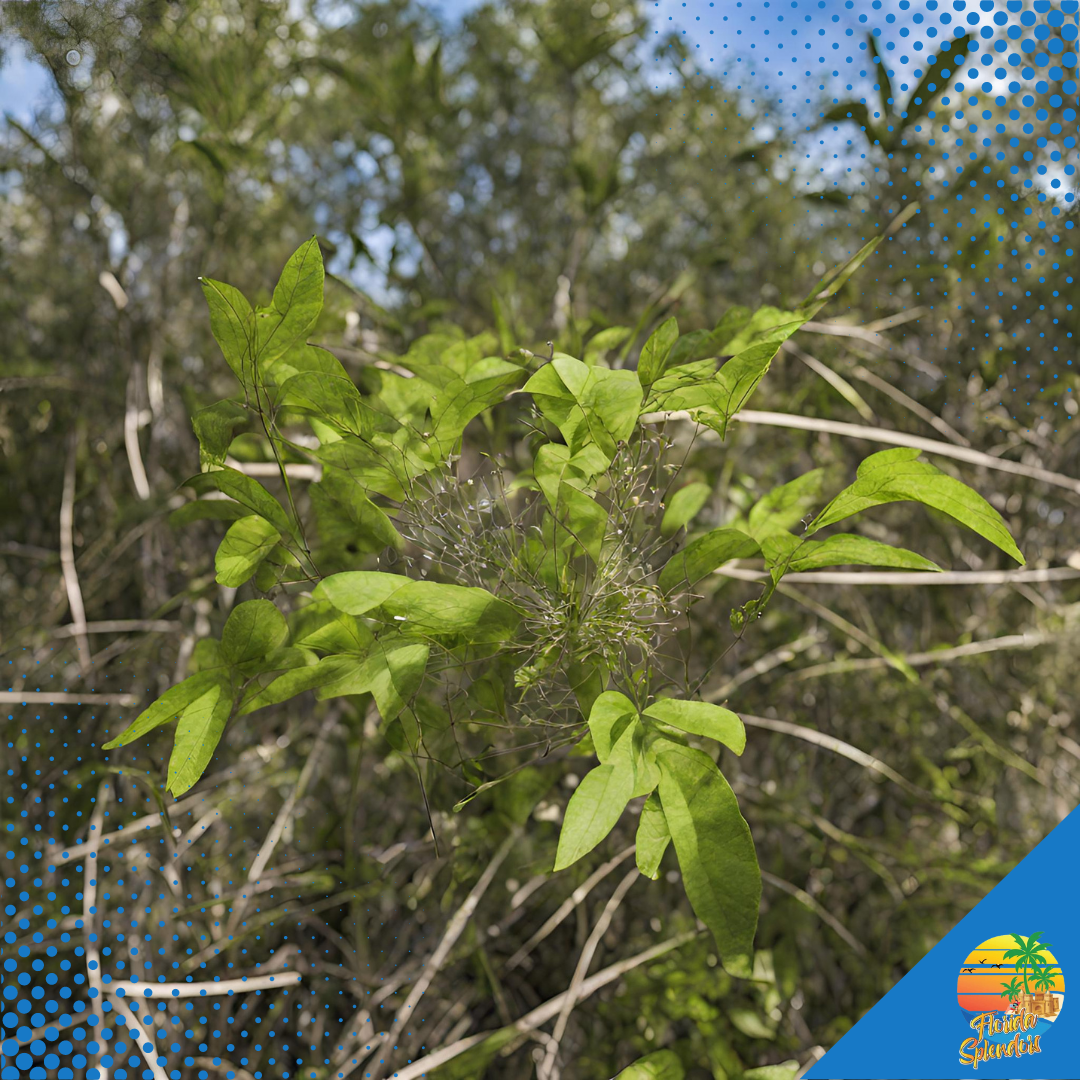
Key Takeaways
- Invasive plants in Florida, primarily non-native species, present significant ecological and economic challenges by displacing native species, altering habitats, and causing annual agricultural losses estimated at $179 million, with management costs reaching up to $45 million annually.
- Common invasive species in Florida, such as Skunkvine, Australian Pine, and Melaleuca Tree, among others, are known to out-compete native species, disrupt habitats, and necessitate early identification and management strategies to mitigate substantial environmental and economic damage.
- Florida employs a multi-faceted approach to manage invasive plants, including decontamination, education, mechanical and chemical control methods, and restoration of native plant communities, while also enforcing legal frameworks and utilizing collaborative community engagement and education to prevent and control the spread of invasive species.
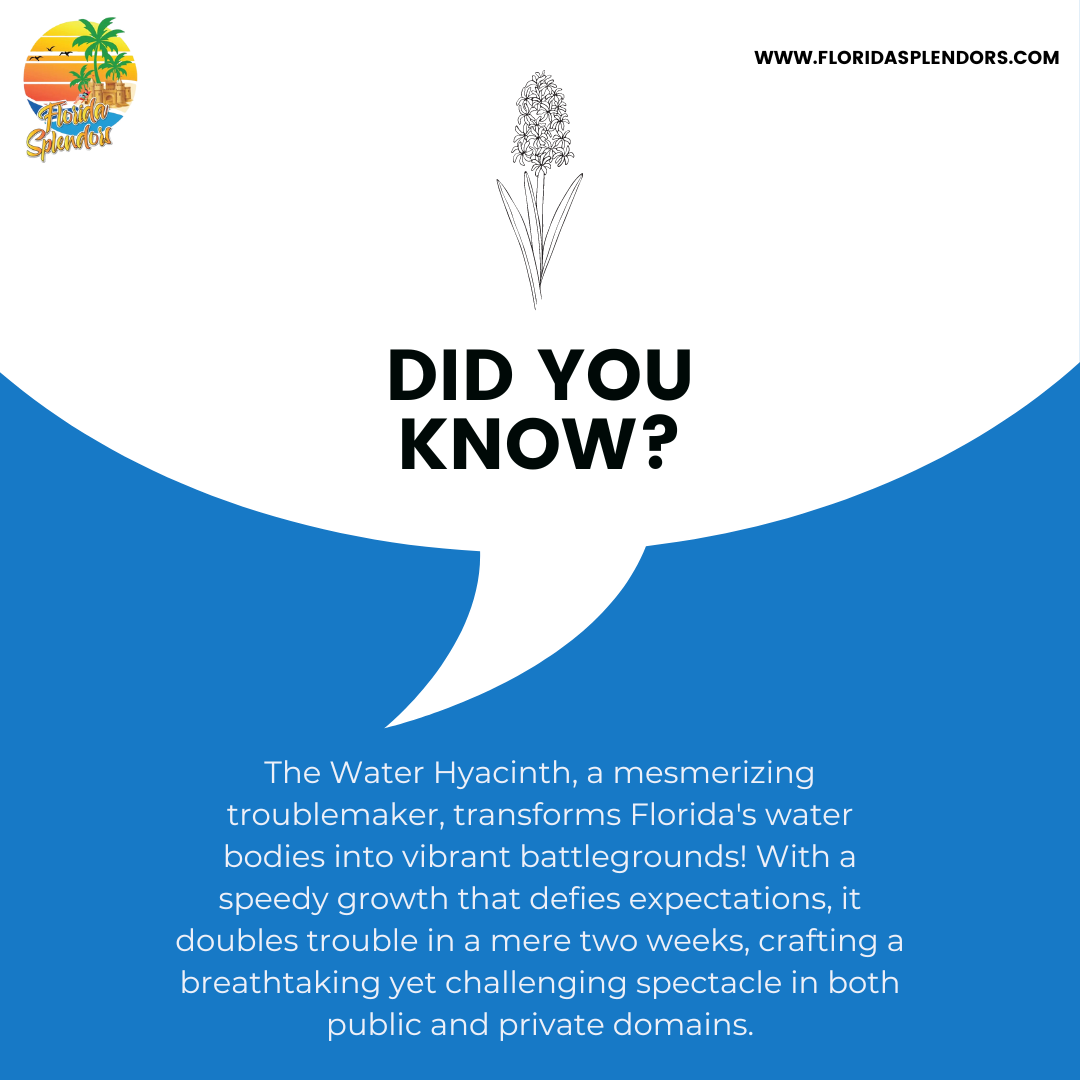
Understanding Invasive Plants in Florida

Invasive plants in Florida, non-native species introduced to the state, carry significant impacts. They:
- Displace native species
- Cause extensive economic harm to the state’s ecosystems and agricultural sectors
- Clog drainage canals
- Contribute to erosion
- Alter Florida plant communities
- Pose an estimated annual agricultural loss of $179 million.
Invasive plants, which are often non native plants, considerably threaten native species by outcompeting them for resources and habitat. This intense rivalry may result in less species diversity, possibly driving native animals away or even leading to their extinction.
Managing these invasive plants costs taxpayers around $30 million to $45 million per year. Category II invasive plants are a group of invasive species that have increased in abundance but have not yet altered Florida plant communities to the extent shown by Category I species. The management of these plants, as well as monitoring invasive species lists, is also included in the efforts.
Identifying Common Invasive Species in Florida

Among the most problematic invasive plants in Florida are:
- Skunkvine: bears small, light grayish pink or lilac flowers and can reach up to 35 feet in length, posing a significant threat to native plant communities.
- Australian pine: displaces native vegetation and alters natural habitats.
- Melaleuca tree: forms dense stands that can displace native plants and alter water flow in wetlands.
- Old World climbing fern: forms dense mats that smother native vegetation and alter fire regimes.
What's Inside
Problems
Each of these species has the potential to out-compete native species, alter habitats, and cause economic and environmental damage. Some invasive species in Florida include:
- Australian pine, which can reach heights of up to 150 feet and contributes to the alteration of native plant communities and the displacement of native species
- Melaleuca tree, distinguished by its considerable height and unique brownish white, multi-layered papery bark, poses a threat to Florida plant communities
- Old World climbing fern, characterized by long unlobed leaflets and thin, wiry vines, is known for altering native plant communities in Florida.

Identifying these invasive plants early is key to halt their spread and lessen ecological damage. Recognizing these plants’ traits helps distinguish them from native species and can expedite prompt management actions. By displacing native flora, disrupting habitats, and jeopardizing biodiversity, these invasive species pose challenges to Florida’s ecosystems.
These challenges emphasize the need for efficient management and control strategies to safeguard the environmental health of the state.
Strategies for Managing Invasive Plants
Florida implements various measures to prevent the spread of invasive plants. These measures include:

- Decontamination of boats and equipment
- Removal of invasive species before dispersal
- Recognition education
- Physical and cultural control methods like hand-pulling, drawdowns, flooding, burning, dredging, and shading
Decontamination procedures help in the early detection of invasive plants by preventing their unintended spread. Additionally, early detection and rapid response protocols are utilized, helping to protect Florida’s natural communities from the negative impacts of invasive plants.

In terms of control, Florida employs a wide range of techniques, including:
- Mechanical methods such as mowing and hoeing
- Use of herbicides for shrubs
- Environmentally conscious approaches like Integrated Pest Management, which aims to manage invasive species in a way that minimizes risk to people and the environment.
Invasive plant management strategies can be applied to minimize the disturbance of soil and canopies. These include control methods that focus on minimal disturbance, such as hand-pulling and careful placement of physical barriers. Strategic use of these methods can help maintain soil integrity and minimize canopy alteration, allowing forestry activities to manage invasives while preserving the ecosystem.
Restoration of Native Plant Communities

Restoring native plant communities in Florida offers advantages including the promotion of interactions between species, preservation of biodiversity, and provision of ecosystem services and wildlife habitat.
The process for restoring these native plant communities is well-documented and can be found in the manual developed by The Nature Conservancy for the Florida Department of Environmental Protection. Native plants in Florida that are well-suited for restoration projects include:
- Baccharis dioica
- Dalea carnea
- Fagus grandifolia
- Gaillardia aestivalis
These plants significantly contribute to the restoration of native plant ecosystems and help preserve Florida’s natural areas. There have been several successful instances of native plant community restoration in Florida. The Wetlands Committee, for instance, has effectively restored stormwater ponds and wooded nature areas with Florida native vegetation. Additionally, there is a noteworthy restoration project in Lake County for the Zone 9 Sandhill plant community.

Legal Framework and Reporting Systems
There can be legal consequences, including fines, if invasive plants in Florida are not controlled. Chapter 5B-57 explicitly prohibits the following activities without a permit:
- cultivation
- introduction
- collection
- transport
Non-compliance can lead to penalties. With laws and programs in place, including statewide coordination and funding by the Invasive Plant Management Section, Florida actively manages invasive plant species. The state’s approach is both legislative and administrative, with the goal of controlling the spread of invasive plants. The EDDMaPS Invasive Species Mapping System serves as a crucial tool for documenting invasive species. It facilitates:
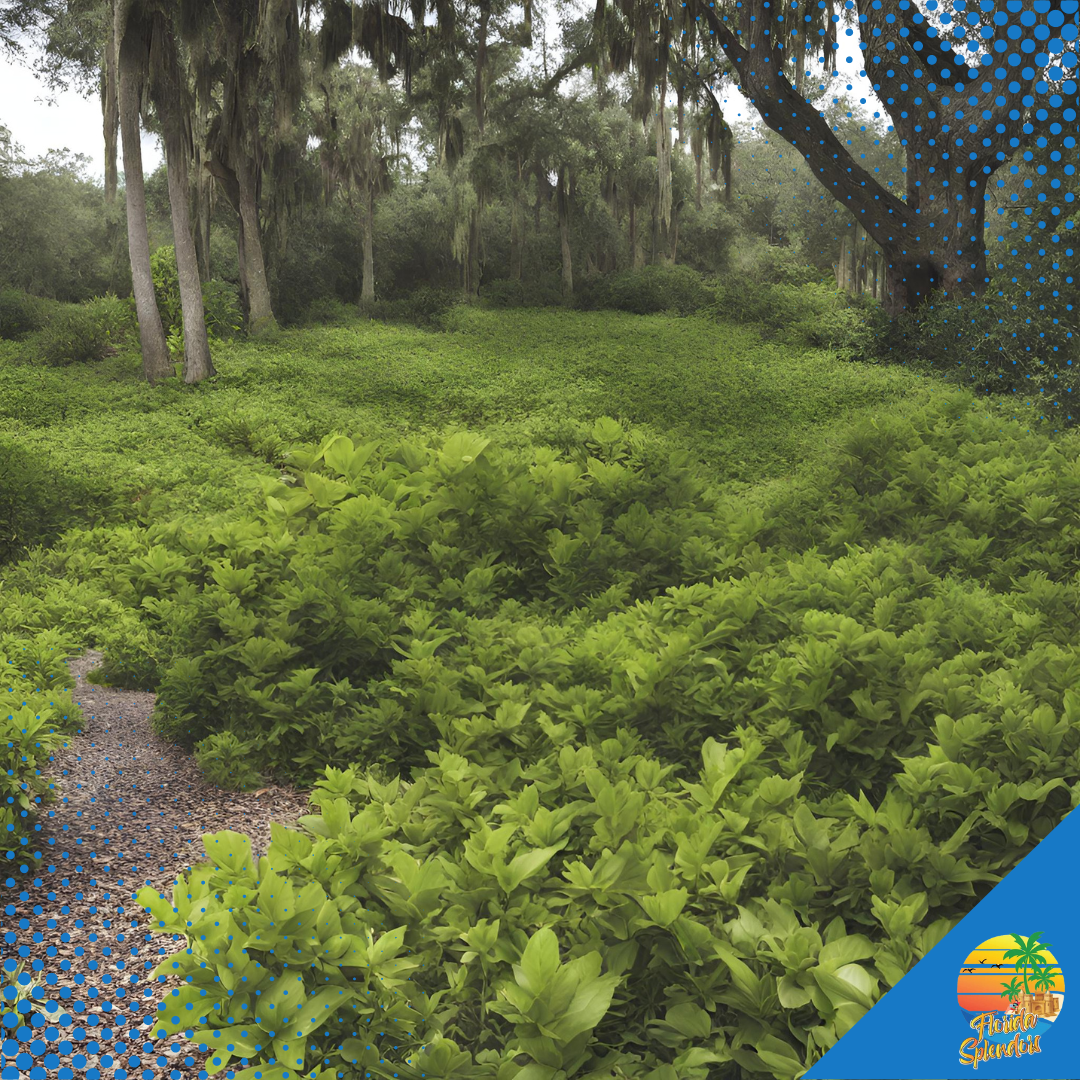
- The submission of observations
- Viewing of results
- Maintenance of personal records
- Data visualization through interactive maps
This system enhances tracking and monitoring efforts of Florida fish in Florida.

Community Involvement and Education
FloridaInvasives.org provides technical and financial assistance programs, educational initiatives to enhance awareness of invasive plants, and partnerships with private landowners. These efforts aim to promote community awareness and alleviate individual land management expenses through collaborative efforts. Community engagement has shown notable success in managing invasive plants in Florida. For instance, The Nature Conservancy in Florida has taken initiatives to control invasive plants in collaboration with partners and volunteers.
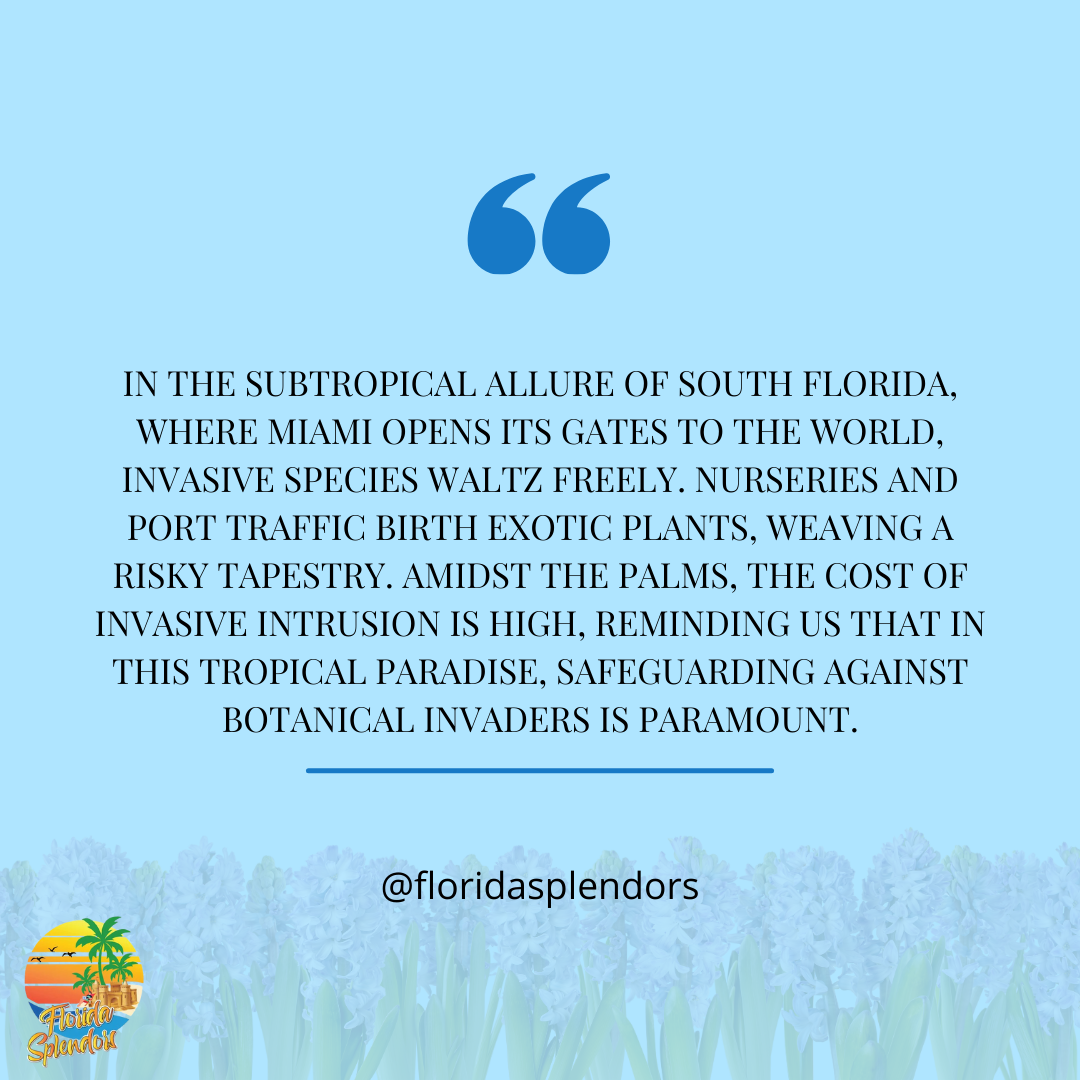
Also, community endeavors have been mobilized to address the issue of cane toads through awareness and strategic measures. Community education has raised awareness, promoted early detection and swift response, and spurred citizen participation in eradicating invasive plants.
Invasive Plants: A Comprehensive Conclusion for Florida’s Ecosystem
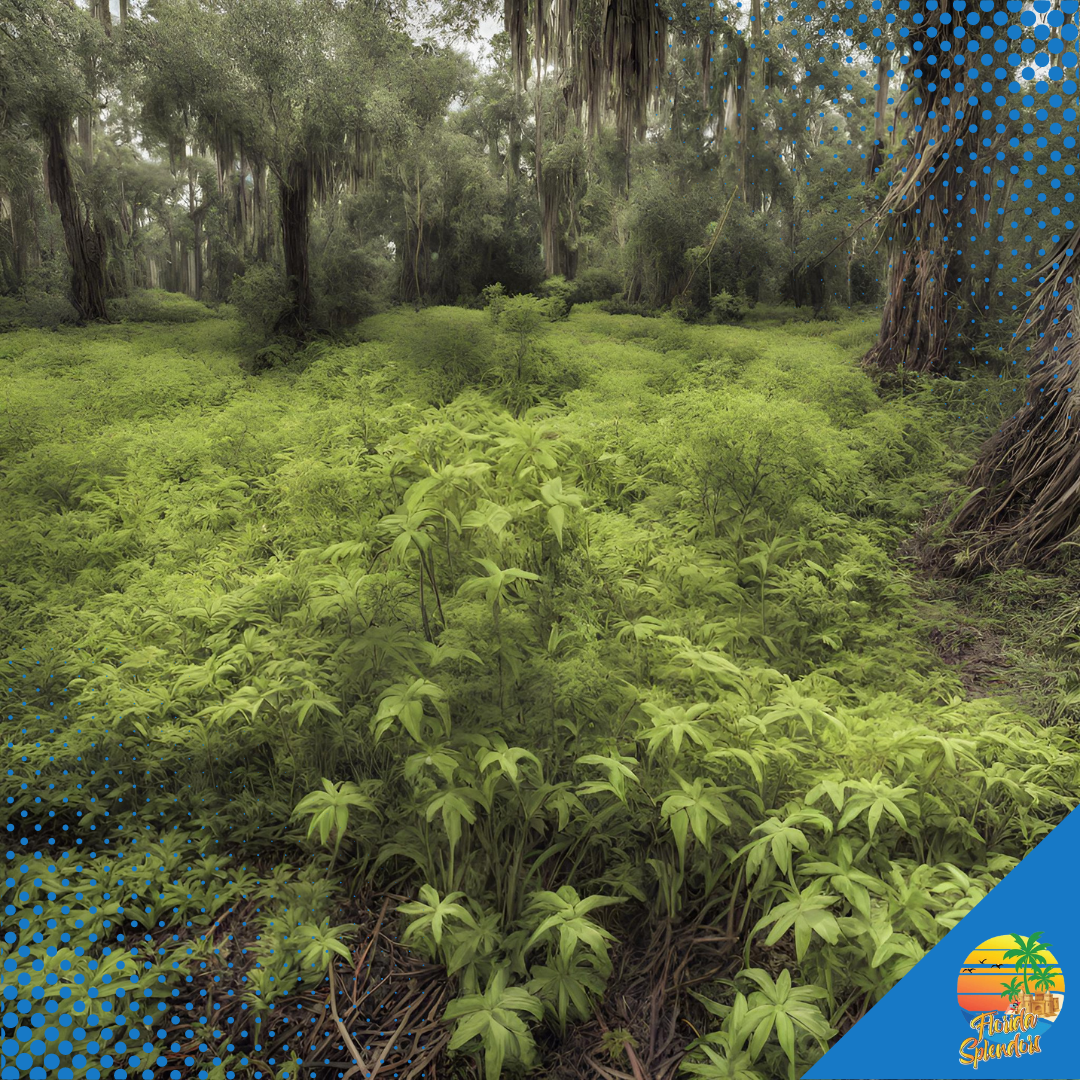
In conclusion, the battle against invasive plants in Florida is a multi-faceted challenge. Effective management involves not only the identification and control of these species but also the restoration of native plant communities and legal regulation. Equally vital is the role of community involvement and education. As we continue to combat these invasive species, let’s remember that every effort counts and every contribution makes a difference.
Frequently Asked Questions
What is a Category 1 invasive plant in Florida?
Category 1 invasive plants in Florida are those that are altering native plant communities by displacing native species, changing community structures or ecological functions, or hybridizing with natives.
What is the fastest growing invasive plant?
The mile-a-minute vine is currently considered the fastest-growing invasive plant, able to grow up to six inches in a day. This rapid growth allows it to outcompete native plant species and disrupt ecosystems.
What are invasive plants?
Invasive plants are non-native species that have established themselves in an area, causing significant impacts on the local ecosystems, economy, and native species. They can outcompete native plants and disrupt the natural balance of an ecosystem.
How does Florida manage invasive plants?
Florida manages invasive plants through measures such as decontamination of boats and equipment, as well as physical and cultural control methods including hand-pulling, drawdowns, and flooding. These efforts aim to mitigate the spread and impact of invasive species.
What is the process for restoring native plant communities in Florida?
You can refer to the manual developed by The Nature Conservancy for the Florida Department of Environmental Protection for guidance on restoring native plant communities in Florida. This manual outlines the process effectively.
Embark on an Uncharted Eco-Adventure: Follow, Connect, Conserve!
Welcome to Florida Splendors, where every click opens a portal to our Sunshine State sanctuary! Join our eco-exploration on Facebook, Instagram, Pinterest, and Twitter.
Dive into captivating content that unveils the secrets of Florida’s rich ecosystems, explore genuine product reviews that celebrate sustainable living, and become part of a vibrant community united by a passion for preserving the unique splendors of the Sunshine State.
Your digital compass to conservation is just a click away – follow, connect, and contribute to our mission of safeguarding Florida’s natural wonders! #FloridaSplendors #EcoAdventure #ConserveWithUs

